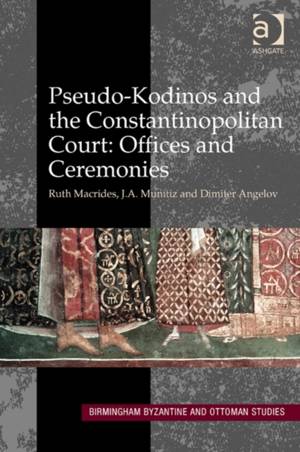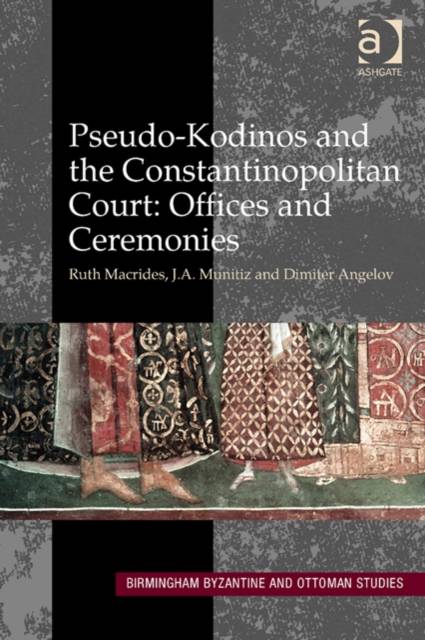
Vous voulez être sûr que vos cadeaux seront sous le sapin de Noël à temps? Nos magasins vous accueillent à bras ouverts. La plupart de nos magasins sont ouverts également les dimanches, vous pouvez vérifier les heures d'ouvertures sur notre site.
- Retrait gratuit dans votre magasin Club
- 7.000.000 titres dans notre catalogue
- Payer en toute sécurité
- Toujours un magasin près de chez vous
Vous voulez être sûr que vos cadeaux seront sous le sapin de Noël à temps? Nos magasins vous accueillent à bras ouverts. La plupart de nos magasins sont ouverts également les dimanches, vous pouvez vérifier les heures d'ouvertures sur notre site.
- Retrait gratuit dans votre magasin Club
- 7.000.0000 titres dans notre catalogue
- Payer en toute sécurité
- Toujours un magasin près de chez vous
Pseudo-Kodinos and the Constantinopolitan Court: Offices and Ceremonies
Ruth Macrides, J a Munitiz, Dimiter Angelov
195,95 €
+ 391 points
Description
The work known as Pseudo-Kodinos, the fourteenth-century text which is one of two surviving ceremonial books from the Byzantine empire, is presented here for the first time in English translation. With facing page Greek text and the first in-depth analysis in the form of commentary and individual studies on the hierarchy, the ceremonies, court attire, the Blachernai palace, lighting, music, gestures and postures, this volume makes an important new contribution to the study of the Byzantine court, and to the history and culture of Byzantium more broadly. The unique traits of this ceremony book include the combination of hierarchical lists of court officials with protocols of ceremonies; a detailed description of the clothing used at court, in particular, hats and staffs; an account of the functions of the court title holders, a description of the ceremonies of the year which take place both inside the palace and outside; the service of the megas domestikos in the army, protocols for the coronation of the emperor, the promotions of despot, sebastokrator and caesar, of the patriarch; a description of the mourning attire of the emperor; protocol for the reception of a foreign bride in Constantinople all these are analysed here. Developments in ceremonial since the tenth-century Book of Ceremonies are discussed, as is the space in which ceremonial was performed, along with a new interpretation of the 'other palace', the Blachernai. The text reveals the anonymous authors' interest in the past, in the origins of practices and items of clothing, but it is argued that Pseudo-Kodinos presents descriptions of actual practice at the Byzantine court, rather than prescriptions.
Spécifications
Parties prenantes
- Auteur(s) :
- Editeur:
Contenu
- Nombre de pages :
- 578
- Langue:
- Anglais
- Collection :
- Tome:
- n° 15
Caractéristiques
- EAN:
- 9780754667520
- Date de parution :
- 28-11-13
- Format:
- Livre relié
- Format numérique:
- Genaaid
- Dimensions :
- 156 mm x 233 mm
- Poids :
- 1059 g







